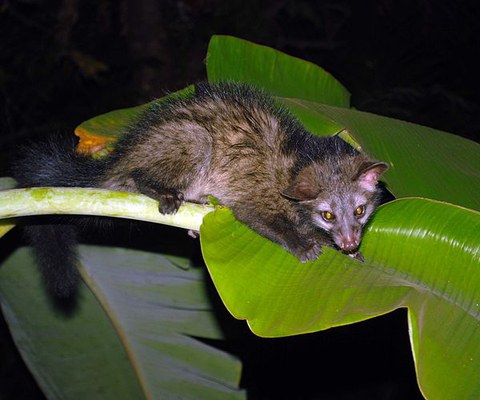Oct 30, 2022
Animals and Money: World's Most Expensive Coffee - Asian Palm Civets in Indonesia

The Asian palm civet plays an important role in the production of Kopi Luwak, the world´s most expensive coffee. The animal is therefor an essential part of a multi-million dollar industry.
Almost 7 million tons of coffee are consumed worldwide each year1. The fourth largest coffee exporter of the world is Indonesia2,3, with over 440,000 t of coffee exported annually4. The specialty coffee Kopi Luwak has become known internationally as the world’s most expensive coffee5,6, gaining popularity as a novelty item. It is produced using coffee beans that have been eaten and excreted by the Asian palm civets (APC)6,7. The complicated production process is the reason for the high prices of the coffee. Nowadays, most Kopi Luwak is produced by caged civets5,6.
Asian palm civets (Paradoxurus hermaphroditus) are viverrids from south-east Asia8. Seeds of the plants they eat, in our case coffe beans, pass through their digestive system largely undamaged7,8,9. In addition to APCs supposedly only consuming the highest quality coffee cherries, the fermentation and partial digestion processes in the civet´s gut result in the coffee made from these beans tasting better than normal coffee.7,8,9,10
An estimated 800 to 8000 Asian palm civets are held to annually produce around 2011-2005 tons of Kopi Luwak, and each animal aids in the production of roughly 255 kg Kopi Luwak per year. With a cost of 10012$ - 1.90013 US$ per kg, the Kopi Luwak industry roughly creates an annual income of 2 million -380 million US$. The turnover of the Kopi Luwak sector is limited e.g. by acquisition costs of civets, their upkeep6 and the production process itself. By Indonesian law, civets have to be released from coffee plantations after five years, but plantation guides reported that they are often kept for their whole lives, which is around 15 years6. The total annual costs of Kopi Luwak amount to roughly 250 thousand US$ to 2,5 million US$, if civets are kept for 15 years. Within the same timespan the yearly net income from Kopi Luwak production in Indonesia sums up to 1,7 – 368 million US$.
Indonesia produced 717,000 t of coffee in 202014, meaning that the Kopi Luwak industry contributes about 2.79 – 27.9% to Indonesian coffee production. The price of Kopi Luwak varies greatly, depending on where in the world it is sold and whether it is produced by wild or captive civets6,12.The costs of acquiring and keeping civets on plantations are difficult to estimate, the only information on such costs comes from the pet trade where prices are likely higher. Accordingly, the net income is likely higher than estimated here. The cost of production was assumed to be similar to normal coffee, but it may be lower, due to having less processing steps10. Costs for transport and storage could not be determined.
Due to a lack of concise data and many variables, the calculation of the exact worth of Kopi Luwak production is difficult. Even though it is difficult to find reliable data on the worth of Asian palm civets to Indonesia it seems clear that they contribute several million US$ to Indonesia’s economy annually. As long as Kopi Luwak remains internationally regarded as a specialty or novelty item, civets will play an important role for Indonesia.
Issue 1
Birte Martens
